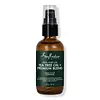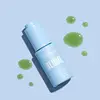What's inside
What's inside
 Key Ingredients
Key Ingredients

 Benefits
Benefits

 Concerns
Concerns

 Ingredients Side-by-side
Ingredients Side-by-side

Helianthus Annuus Seed Oil
EmollientRibes Nigrum Seed Oil
EmollientRosa Canina Fruit Oil
EmollientCalophyllum Inophyllum Seed Oil
AntimicrobialMelaleuca Alternifolia Leaf Oil
AntioxidantPalmitoyl Olive Leaf Extract
AntioxidantTanacetum Annuum Flower/Leaf/Stem Oil
MaskingChamomilla Recutita Oil
MaskingHelichrysum Italicum Flower Oil
MaskingSimmondsia Chinensis Seed Oil
EmollientRosmarinus Officinalis Leaf Extract
AntimicrobialBisabolol
MaskingCarthamus Tinctorius Seed Oil
MaskingSesamum Indicum Seed Oil
EmollientWithania Somnifera Root Extract
Skin ConditioningBeta Vulgaris Root Extract
Skin ConditioningHelianthus Annuus Seed Oil, Ribes Nigrum Seed Oil, Rosa Canina Fruit Oil, Calophyllum Inophyllum Seed Oil, Melaleuca Alternifolia Leaf Oil, Palmitoyl Olive Leaf Extract, Tanacetum Annuum Flower/Leaf/Stem Oil, Chamomilla Recutita Oil, Helichrysum Italicum Flower Oil, Simmondsia Chinensis Seed Oil, Rosmarinus Officinalis Leaf Extract, Bisabolol, Carthamus Tinctorius Seed Oil, Sesamum Indicum Seed Oil, Withania Somnifera Root Extract, Beta Vulgaris Root Extract
 Reviews
Reviews

Ingredients Explained
These ingredients are found in both products.
Ingredients higher up in an ingredient list are typically present in a larger amount.
Carthamus tinctorius seed oil comes from safflower, one of humanity's oldest crops.
Safflower seed oil contains a high percentage of linoleic acid and oleic acid. It also contains Vitamin E. These three components are effective moisturizers.
Vitamin E helps nourish your skin's lipid barrier. It is also a potent antioxidant. Antioxidants help fight free-radical molecules, or unstable molecules that may damage your skin cells.
Due to its high fatty acid content, this ingredient may not be malassezia folliculitis safe.
Thoughout history, safflower has been used for dying fabrics and in food as a saffron substitute.
Learn more about Carthamus Tinctorius Seed OilHelianthus Annuus Seed Oil is the oil derived from the seeds of a Sunflower. Sunflower seed oil is non-fragrant. It is an emollient, meaning it helps to soften the skin.
Sunflower seed oil contains many fatty acids. The fatty acids found in sunflower seeds include (from highest amount to least): linoleic acid, myristic acid, palmitic acid, stearic acid, arachidic acid, oleic acid, and linolenic acid.
These fatty acids help the skin create ceramides. Ceramides play a role in repairing the skin barrier.
Helianthus Annuus Seed Oil helps moisturize the skin. This in turn helps the skin look more rejuvenated and smoother.
Sunflowers are rich in vitamin E.
Historians believe Indigenous cultures of North America domesticated sunflowers before corn. Thus they relied on sunflower oil for a variety of uses. One such use is moisturizing skin and hair.
Sunflower seed oil may not be fungal acne safe. We recommend speaking with a professional if you have any concerns.
Learn more about Helianthus Annuus Seed OilThis tea tree oil comes from the leaves of the Tea Tree plant. Tea tree oil has antioxidant, anti-inflammatory, and antimicrobial properties.
According to the book Journal of Profiles of Drug Substances, tea tree helps in reducing acne-causing bacteria such as Propionibacterium acnes. This is due to the Terpinen components of tea tree oil.
Tea tree may cause sensitivity and irritation for some people. This oil naturally contains fragrance such as linalool and limonene.
However, research shows irritation usually occurs when using pure tea tree oil and not in cosmetic products.
Tea tree oil was found to help relieve the symptoms of psoriasis in one study.
Tea tree oil is toxic when ingested. Another study showed it to caused damage to the nervous system of dogs and cats when applied to their skin or given orally.
Learn more about Melaleuca Alternifolia Leaf OilSesame oil comes from sesame seeds. Sesame oil is rich in fatty acids and Vitamin E.
It has antibacterial, antioxidant, and anti-inflammatory properties. The phenolic compounds of this ingredient (including vitamin E) give it these properties.
Unrefined sesame oil has a comedogenic rating of 3, while refined sesame oil has a rating of 1. This ingredient may not be fungal-acne safe.
The fatty acids in sesame oil include linoleic acid (41%), oleic acid (39%), palmitic acid (8%), stearic acid (5%), and some small traces of others.
Learn more about Sesamum Indicum Seed Oil